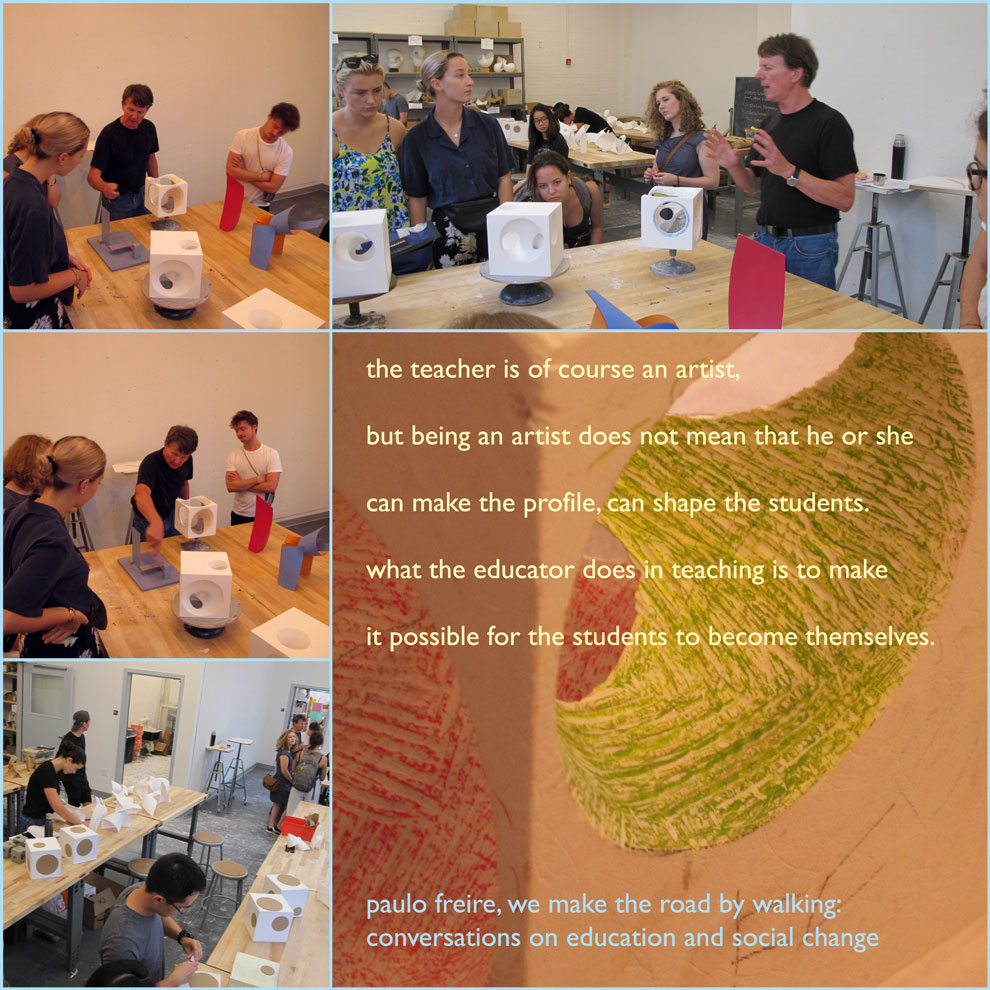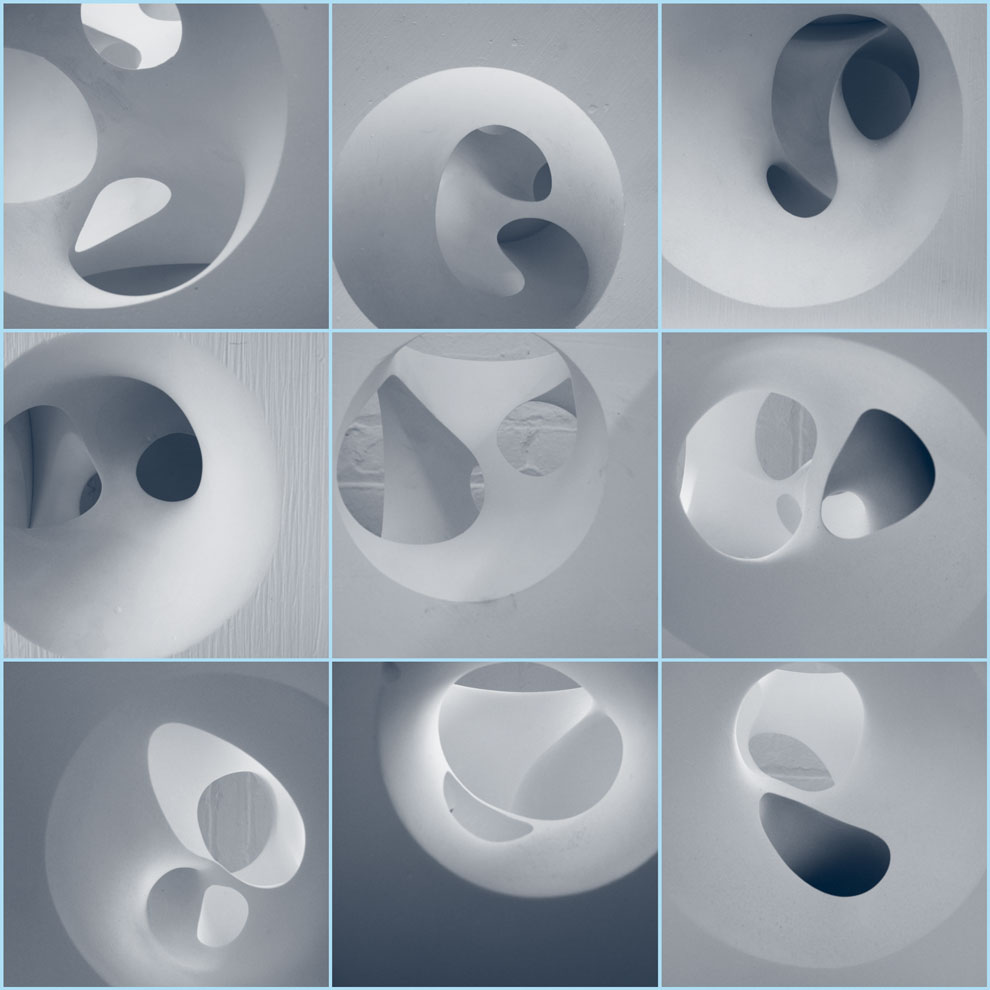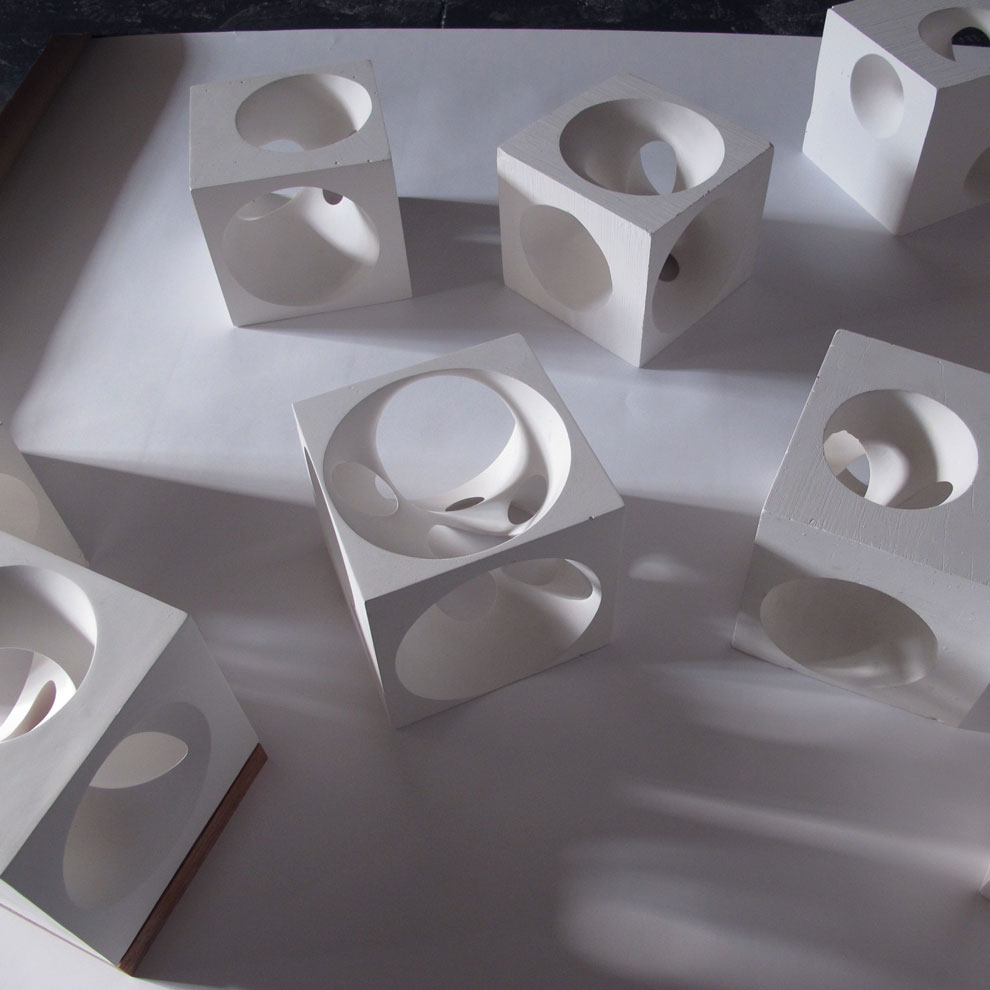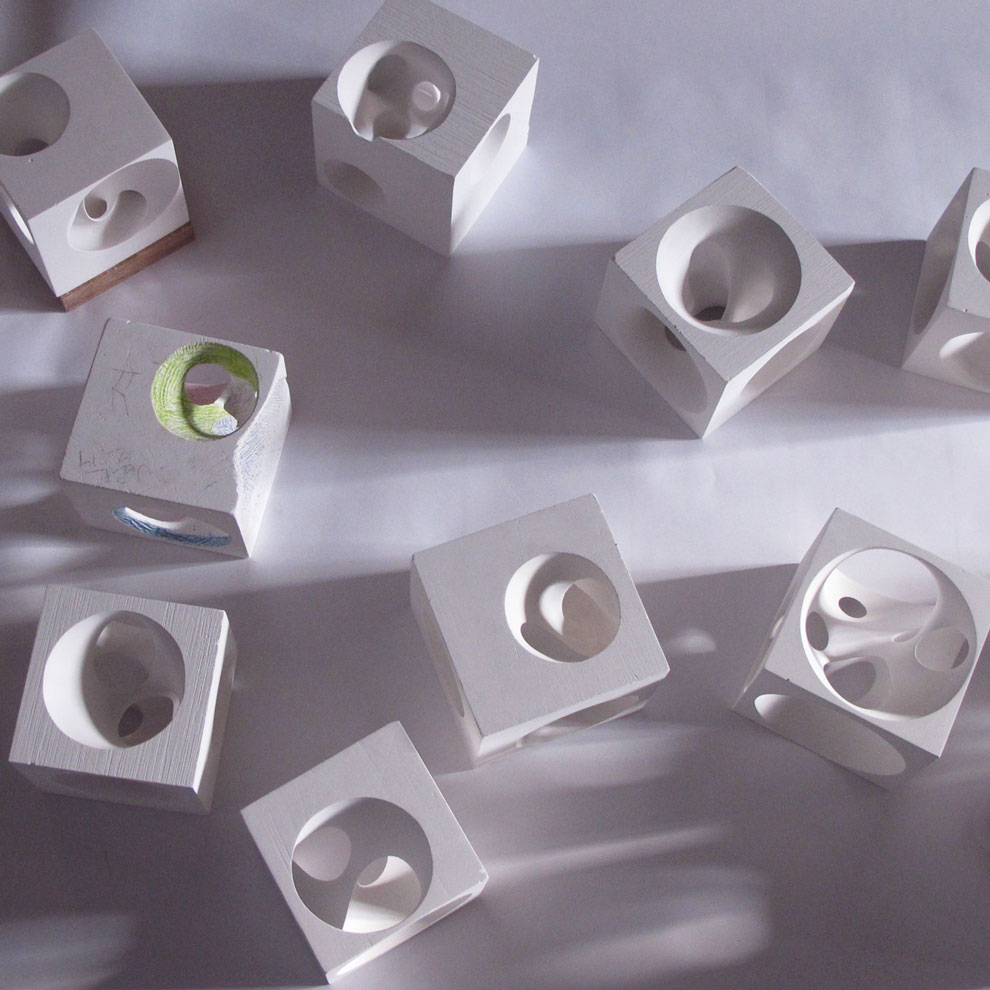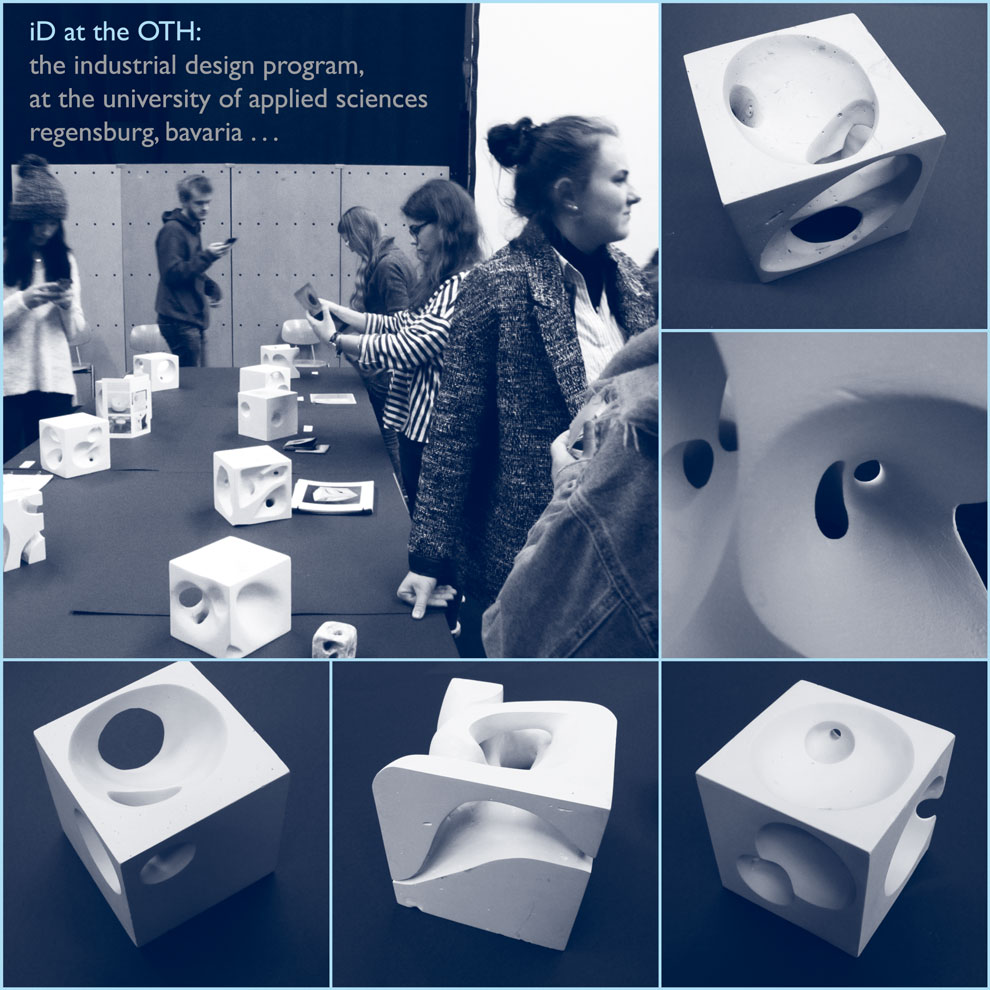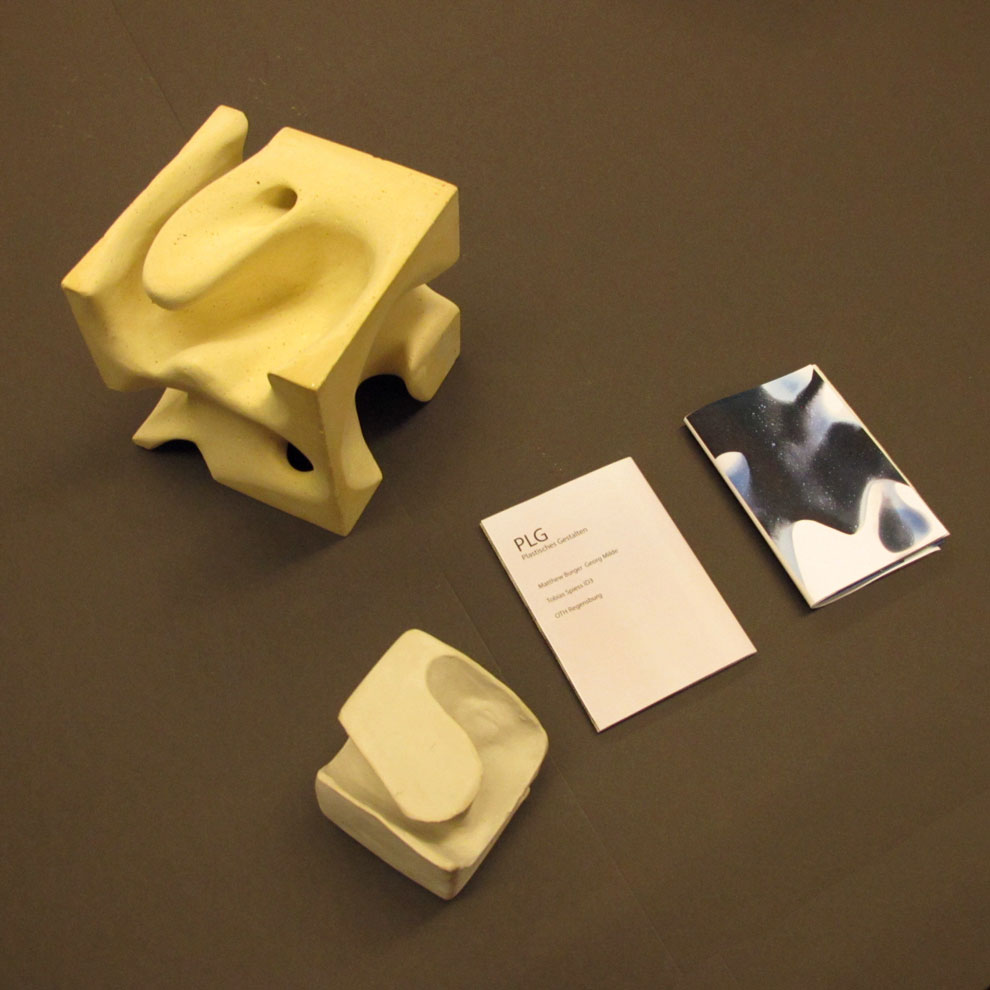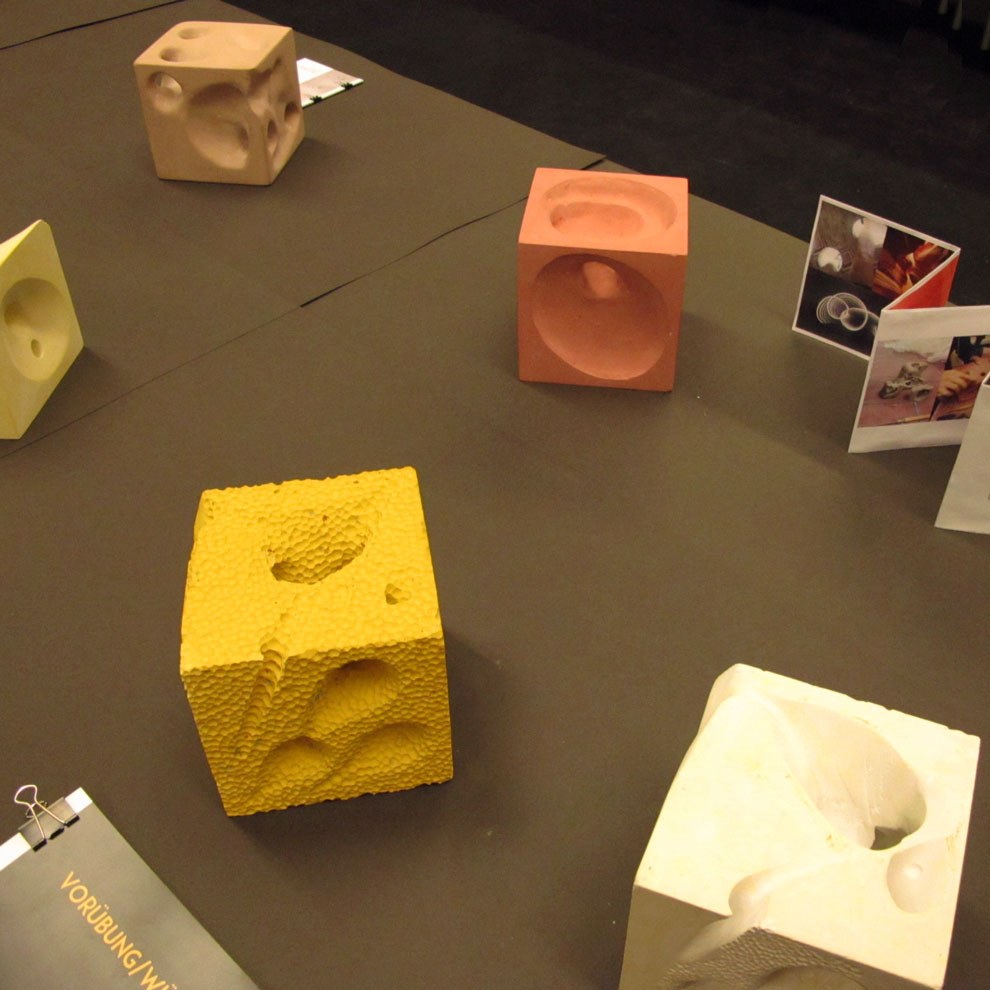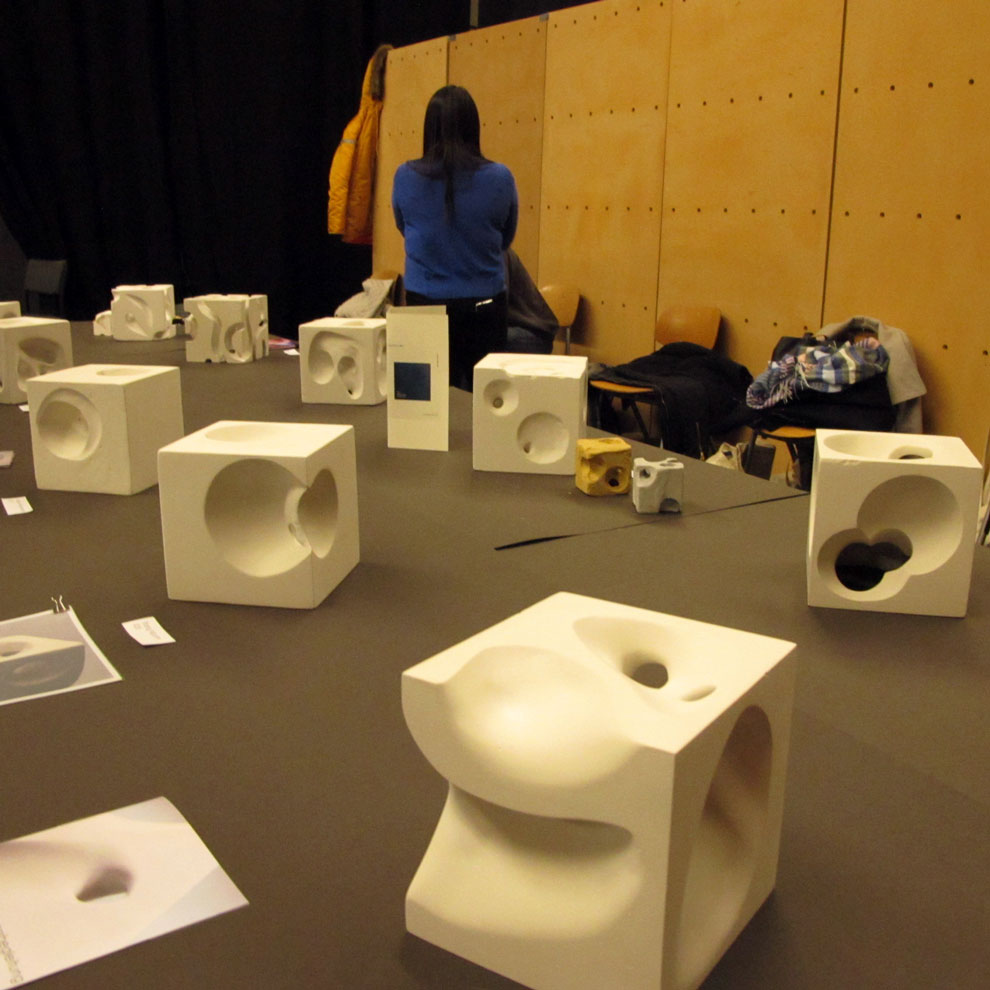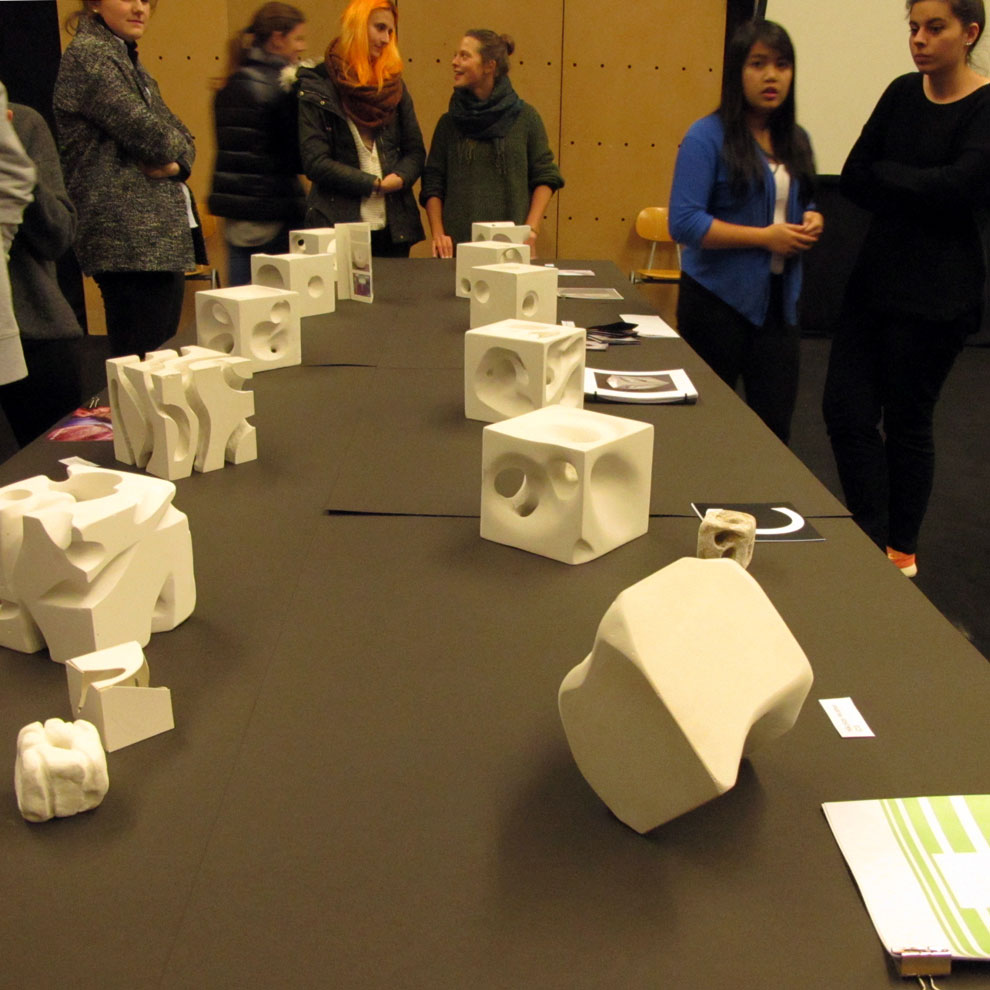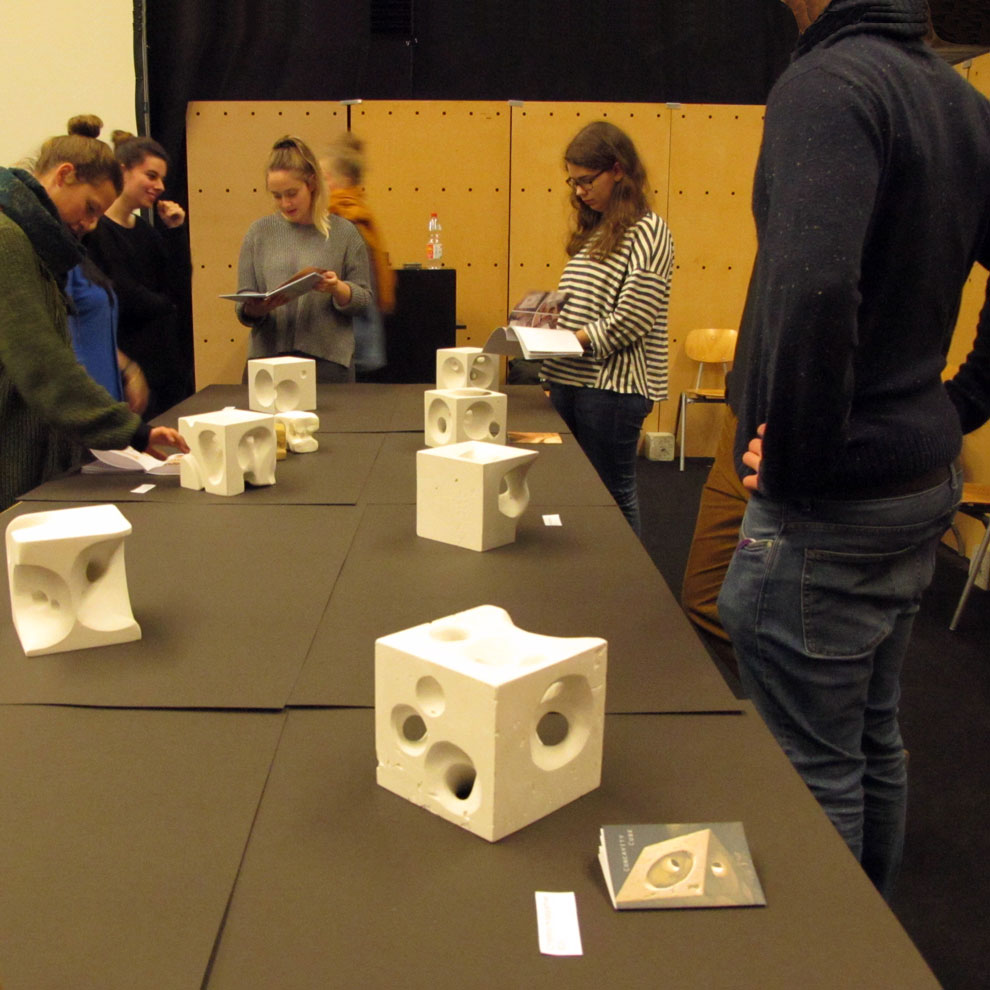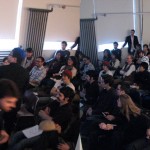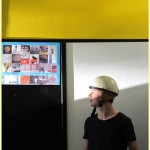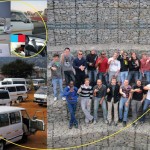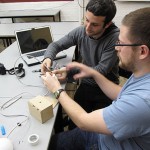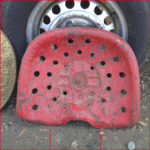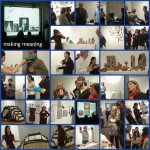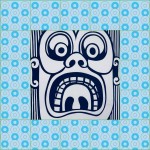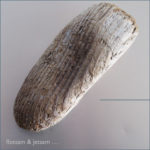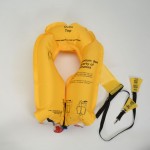the language of form & concavity . . .
the following is an excerpt from the rowena reed kostellow fund’s website,
problem three: concavity
the sculptural exercise that emphasizes concavity explores a relationship which is seldom understood. a talented and intuitive designer may well arrive at sensitive, positive volumes, but unless the important relationship of the negative volumes, or concavities, to the positive forms are explored, his visual solution is only half controlled. in the convexity exercise you were already learning about concavity – about how negative volume affects form. now, the focus will be on concavity.
establish dominant, subdominant, subordinate relationships. the first big spatial relationship should express the whole design. it should express the character and proportions of the volumes; the rhythmic movement of the volumes; and variety and contrast of curved and straight lines. work on contrast. if things are different they must complement each other. be aware of the axes. not only do positive forms have axes, but concavities have axes as well. when the shape of a concavity is strong, it becomes a thing. it’s almost like a positive form. do not trap the negative space. it should go around and come out and go someplace else. the space should flow, pushing against the volume in an eroding process, like a river through a canyon. try to indicate how you’d go through it with the eye. see how the outside lines relate to the inside lines.execute your final design using a salt block or plaster block as your medium. plaster is ok here. you can afford to work more quickly on the concavity exercise because you can gouge and hollow the material. if you work in salt, use files and sandpaper as you did in the convexity problem.
you will want to increase the presence of the form through its expansive characteristics. once again, you want to end up with a form that looks larger than the geometric form you started out with . . .
jeffrey kapec, the design process & abstraction …
posted 1 March 2020
categories education
© visualsyntax. powered by wordpress.
